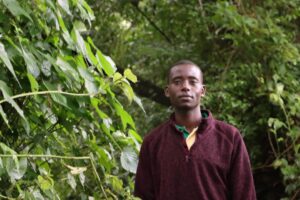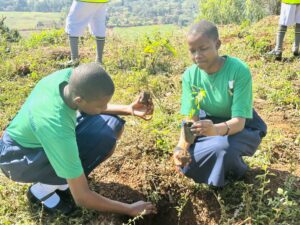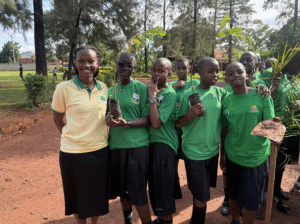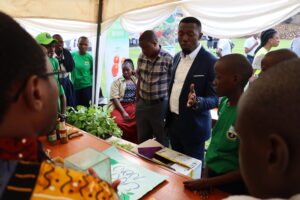An Eye-Opener for people in the Great Rift Valley of Western Uganda
On March 28, 2025, a powerful 7.7 magnitude earthquake struck near Mandalay, Myanmar, causing widespread destruction and loss of life. This natural disaster serves as a stark reminder of the vulnerabilities in the face of climate change to re-evaluate our role and impact on the natural environment. It’s a great pity to see the suffering humanity is going through as a result of natural calamities however, we need to open up an evaluate our own common homes and regions to see what is happening, particularly for those of us living in the Great Rift Valley of western Uganda. The events in Myanmar compel us to reflect on the state of our common home and reconsider our actions, especially concerning activities like mining and quarrying that may weaken the geological support mechanisms in our earthquake-prone zones.
The Geological Context of the Great Rift Valley
The Great Rift Valley is a tectonically active region, making it susceptible to earthquakes. In Uganda, particularly in areas like Saaka, mining and quarrying activities have raised concerns about destabilizing the geological structures that provide support for the rift. Such human activities not only compromise the land but also increase the likelihood of geological hazards, such as earthquakes and landslides.
Historical context is essential when discussing the implications of our actions. In 1964, Fort Portal experienced an earthquake that caused significant damage, with buildings collapsing and infrastructure compromised. Similarly, the 1994 earthquake struck the region, resulting in collateral damage across several districts. The lessons learned from these past incidents highlight the importance of understanding our environment and the risks associated with our activities.
Lessons from Myanmar: An Urgent Call to Action
The recent earthquake in Myanmar serves as an eye-opener, illustrating the destructive potential of natural disasters and the dire consequences that can arise when communities are unprepared. Reports indicate that thousands were displaced, infrastructure was decimated, and many lives were lost. The aftereffects of such earthquakes often extend beyond immediate destruction; they can lead to long-term socio-economic challenges, including displacement, poverty, and health crises.
The situation in Myanmar reinforces the necessity of valuing the teachings of Pope Francis’s encyclical, Laudato Si’, which calls for a deep examination of the condition of our common home. In Chapter One, the encyclical encourages us to assess what is happening to our environment and understand our role in nurturing it.
Practical Steps Forward: Valuing Our Common Home
1. Sustainable Practices: It is crucial for us to reevaluate our mining and quarrying practices in the Great Rift Valley. We must adopt sustainable methods that minimize environmental degradation and consider alternative livelihoods that do not compromise our geological integrity.
2. Community Awareness and Education: Building awareness about the risks of living in an earthquake-prone area is essential. Communities should be educated about the potential dangers of mining activities and the importance of maintaining geological stability.
3. Disaster Preparedness: Drawing inspiration from the lessons learned in Myanmar, local authorities should develop and implement disaster preparedness plans. These plans must include early warning systems, evacuation routes, and community drills to ensure that residents are ready in the event of an earthquake.
4. Advocacy for Policy Changes: Engaging with policymakers to advocate for stricter regulations on mining and quarrying can help protect our environment. We must push for policies that prioritize ecological sustainability and community safety.
5. Embracing Laudato Si’: Finally, we must take to heart the messages of Laudato Si’ and embody its call to action. By fostering a culture of stewardship, we can ensure that we honor our environment, protect our communities, and work toward a sustainable future.
In conclusion, the earthquake that struck Mandalay, Myanmar, is a powerful reminder of the vulnerabilities we face in the Great Rift Valley. Let us learn from this tragedy and take proactive steps to safeguard our common home, ensuring that we value the environment and the teachings of Laudato Si’ as we navigate the challenges ahead. Together, we can create a more resilient and sustainable future for ourselves and generations to come.
Fred Ayebale
Laudato Club Leader
Mountains of the Moon University!














